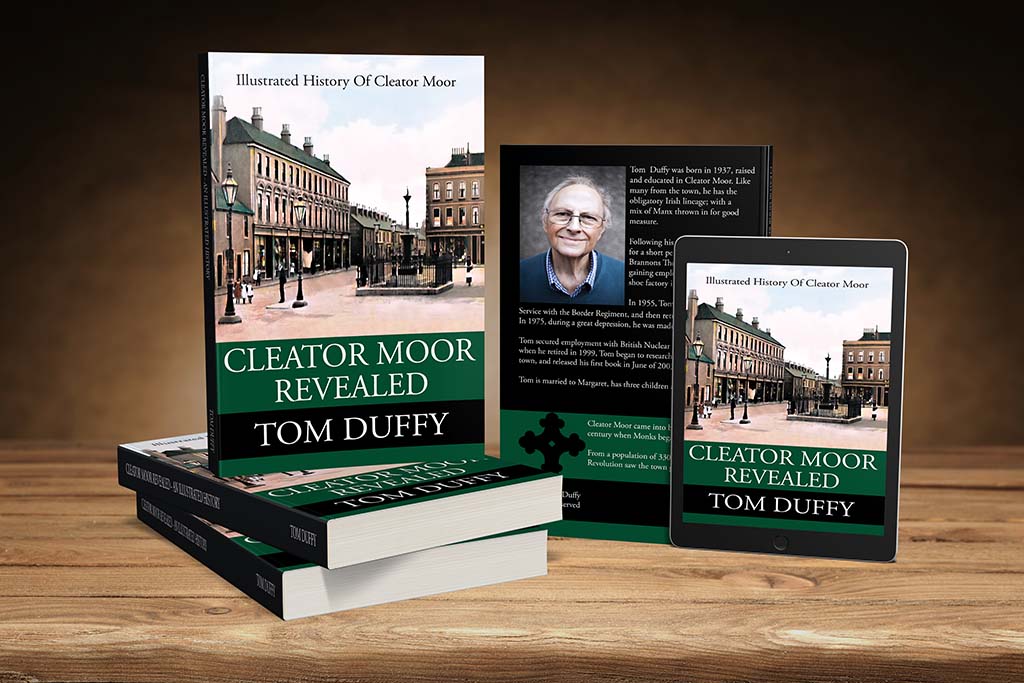In 1914, war brought women into the workplace. Ainsworth's Mill at Cleator had won a lucrative government contract for khaki linen th...
In 1914, war brought women into the workplace.
Ainsworth's Mill at Cleator had won a lucrative government contract for khaki linen thread for army uniforms. In 1915, a group of women who worked at the Mill were unhappy with poor pay and conditions. 250 women, and 20 boys downed tools, and went on strike. The issue was raised in the House of Commons, on 8th March 1915 by the MP for Attercliffe in Sheffield:
Mr. ANDERSON asked the Under-Secretary of State for War whether Messrs. R. Ainsworth and Sons, Cleator Mills, Cleator Gate, Cleator, are contractors for the War Office; whether he is aware that this firm, which makes khaki and other thread used in the manufacture of uniforms, pays adult women workers a wage of 7s. to 8s. a week, with a bonus of 1s. to 2s. for 60 hours' work, and that the women sometimes work as many as eleven and twelve hours a day and suffer from overstrain and exhaustion; and whether, in view of the Fair-Wages Clause, he will cause investigation to be made with a view to a remedy?
Mr. BAKER The firm in question holds contracts for the War Office. My attention has already been drawn to the labour conditions alleged to prevail at their works, and the matter is now being investigated.
The women and girls all belonged to the National Federation of Women Workers, founded by Mary Macarthur (the wife of William Anderson MP). On March 17, 1915, a meeting was held by the women of Ainsworth’s Mill, at
Cleator Moor Market Hall.
Councillor J Walker presided and explained at length the object of the meeting and the cause of the strike, his address being followed by an address on the same subject by Miss Ada Newton, who was the organising secretary from the women’s union.
Having heard of the treatment meted out by the directors of the Cleator Mills on their employees, the meeting passed a resolution that the employees were justified in the action taken and pledged support until such time as their demands were met.
- May 6, 1915, the strike was over.
Ninety-five per cent of the women employees voted in favour of accepting an offer, which enhanced wages and war bonuses of 6d (two-and-a-half pence) to 16-year-old girls and under, and one shilling (five pence) to girls over 16. 10% war bonuses were paid out to encourage good timekeeping, and to help counter the rapid rising cost of living.
- The National Federation of Women Workers (NFWW) was a trade union in the United Kingdom active between 1906 and 1921 when it merged with the GMB. It was established by Scottish suffragist Mary Macarthur, on the basis of being a general trade union "open to all women in unorganised trades or who were not admitted to their appropriate trade union." Some of the initial aims of the union were to campaign against sweated industries and for a legal minimum wage for women.
- The male-dominated unions regularly opposed the idea of "organised women" who would damage the status of trade unionism by the nature of having women who could not vote be part of the political movement. The NFWW had seventeen branches at the end of its first year and around 2,000 members, this grew to an estimated peak of around 40,000 in 1914.
- In 1920, the Cleator women again went on strike over low wages. Their wages were the lowest in the country. What seemed like a small victory in 1915, carried significance for the rights of other women workers, but only for a short time.
- The Trades Union Congress see the strike at Cleator as an important action in the development of the union movement.
Top Photo: Cleator Mills NFWW, April 29th 1915

 |
| Spinning Room, Cleator Flax Mill, C1900 |







